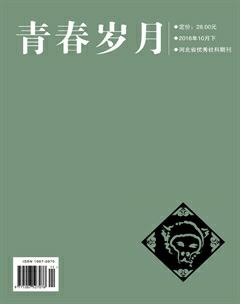Cultural Differences Viewed from Color—related Words
ZhaoYan
Abstract:Color is a kind of objective phenomenon in nature and natural color consists of seven chromatic lights. Finding their way into the language, color words have two main functions, i.e. to the colors are named and to be entrusted with figurative senses that abound both in the Chinese and English languages. This paper briefly discusses the differences between Chinese and English color-related words and analyzes the cultural difference reflected upon them.
Key words:Color-related words; Chinese and English; Cultural difference
1. Introduction
“Color is a kind of visible quality that objects have” (Oxford 267). In the language, on the one hand, the colors “red, orange, yellow, green”, etc. are named; on the other hand, color words are entrusted with implications according to their physical, optical and chemical properties. Both Chinese and English have abundant color words that contain respective cultural connotations.
This paper focuses on Chinese and English color-related words and compares the similarities and differences between them. From the above analysis, cultural differences will be reflected.
2. Culture differences of English and Chinese Color Words
Every nation has its own tradition and preference for color. From the above analysis, we can more or less discover there are many differences in the cognition and comprehension of color for Chinese and English people.
2.1 Cultural difference of “yellow”
For example:
In the middle of the night, she began to turn yellow.
“Turn yellow” means “fear” in western culture. However, Chinese people will get confused when hearing this sentence. In English, “Yellow” is used to express “timid, shy, mean and fear”, and it is much to do with western culture.
While in China, “yellow” is the symbol of the nation in the traditional culture. It is the color of gold, and also related with imperial power. But with the disintegration of feudal society, the high position of “yellow” has decreased. In modern Chinese language, the color “yellow” has become the symbol of bawdy, such as pornography or pornographic novel. (黄色刊物或黄色小说)
2.2 Cultural difference of “red”
For example:
He has no experience in business, and I think he will soon get into the red.
“ get into the red ” can be translated into “deficit”( “出现赤字”), which is opposite to “get out of the red”.
In English culture, “red” is used to express “anger, violence and becoming short of money in business”.
While in Chinese culture, red is the symbol of “fame, happiness, a festival day and prosperity”. In the old time or even today, it seems that the wedding ceremony must be decorated with red things, all of which are the symbol of happiness.
Moreover, the color “red” is the symbol of revolution. In the movie, we can hear “红色歌曲,红色革命, 红军”. One important reason is that the color “red” can stimulate somebody to become excited. According to psychology, “red” can promote heart to beat quickly. Therefore, it is selected as the symbol of revolution. Lastly, “Red” is often the symbol of danger. The traffic light is a good example to support this point. On the road, a lot of warning marks is red so as to remind people to “be careful.”
2.3 Cultural difference of “white”
“White” is another one of the most frequently used color words. In English culture, it is usually used to express wedding garment, purity and elegance.
In Chinese culture, apart from the meaning of purity, “white” has other symbols as well. Firstly, it means something which is understood or a problem which is worked out. For example, we have “真相大白”.
Secondly, it symbolizes sadness. In a funeral, the participants will wear white clothes to show their respect to the people who has died.
Thirdly, white shows that something is in vain. such as, “白费力气, 白跑一趟”.
All in all, from the cultural differences of color-related words in different languages, we know that there exits distinct translation between the two languages. Apart from the aforementioned colors, there are other colors which also show the cultural divergence. Such as, in Chinese culture, “black” is the symbol of death, something bad or evil. While in English culture, “black” is the symbol of dignity, depression, or something bad. “Black Friday” means “耶稣受难日” ,because Jesus Christ was hang on this day, which deals with religious events. “Green” in Chinese has the meaning of failure in marriage when people talk about marriage. While in English culture, “green” means short of knowledge, experience or training. Cultural difference of color is not an easy thing. So it is important for learners to pay close attention to the translation of color words and the culture, history, and literature of both Chinese and English. Only in this way, can we have a better understanding and command of the cultural difference of color words.
3. Conclusions
Finding their way into language, colors are entrusted with respective meanings. This paper mainly analyzes the different implications and cultural differences reflected from the implications. According to this paper, we can come to the conclusion that cultural differences are reflected from the color-related words. Whats more, the implications of the color-related words can enrich our understanding of language expression, especially in some literal works, such as “Ode to the West Wind”, in which large numbers of color words are used to express the thought and emotion of the poet. Lastly, color words make it possible for us to experience and learn multi-culture and the history of each nation as well. This thesis has some shortcomings and limitations, so further research of color-related words is recommended.
【Bibliography】
[1] 杜学增. 中英文化习俗比较[M]. 北京: 外语教学与出版社, 1999.
[2] 李瑞华. 英汉语言文化习俗比较[M]. 北京: 外语教学与研究出版社, 1996.
[3] 朱永涛. 英美文化基础教程[M]. 北京: 外语教学与研究出版社, 2010.
[4] 吴定柏. 美国文学欣赏[M]. 上海: 上海外语出版社, 2010.
[5] 戴特斯曼, 克兰德尔, 卡 尼. 美国文化背景[M]. 世界图书出版公司, 2010.

